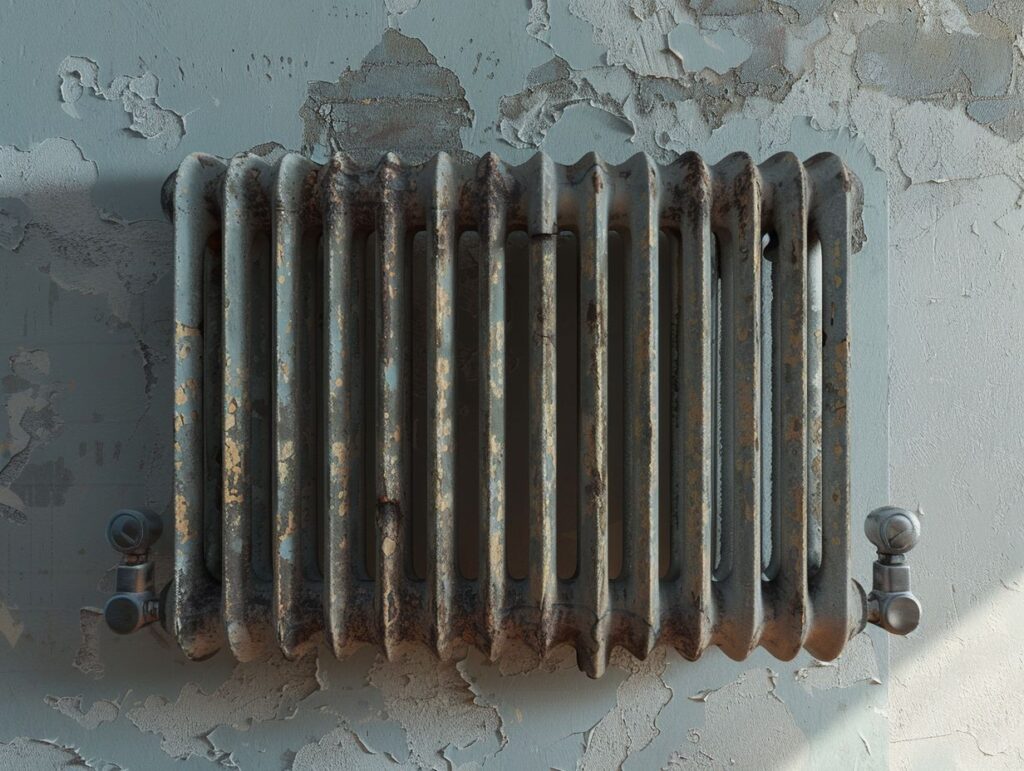Are you feeling unsure about which direction to turn your hallway radiator valve? It’s a common issue that many face.
In the following discussion, the various types of radiator valves will be explored, along with methods for determining the appropriate direction to turn a hallway radiator valve. Additionally, the necessary tools and techniques will be addressed.
Common problems like stuck or leaking valves will be troubleshooted, and guidance will be provided on maintaining and cleaning radiator valves for prolonged usage.
You will also learn about the signs indicating the need for radiator valve replacement and the steps involved in carrying out this process.
Be sure to stay tuned for all the vital information required to ensure the smooth operation of your radiator.
Key Takeaways:
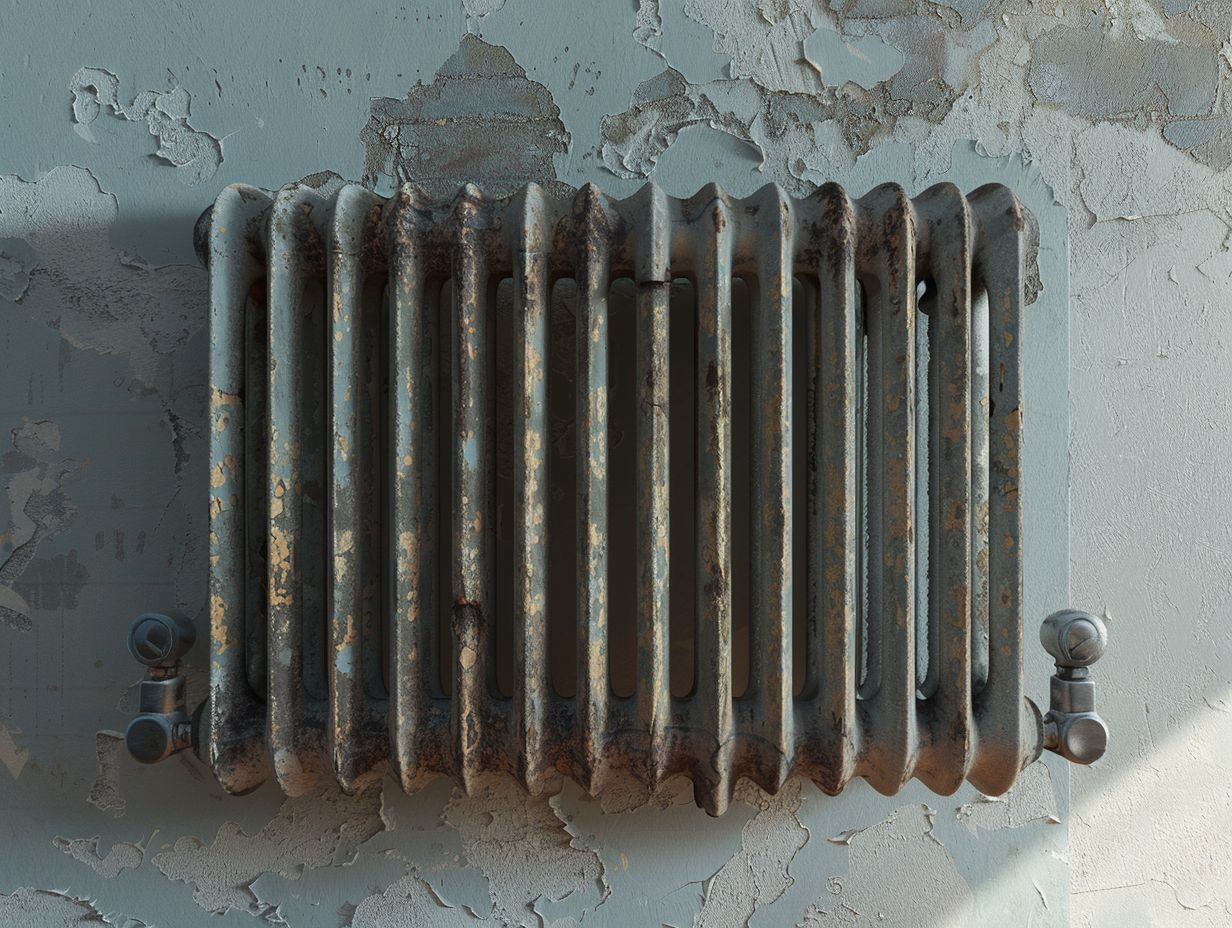
- Always determine the correct direction for turning your hallway radiator valve before attempting to adjust it.
- Use the appropriate tools and techniques, such as a valve key or pliers, to ensure smooth and successful turning of your radiator valve.
- Regular maintenance and cleaning of your radiator valves can help prevent common issues and prolong their lifespan.
Understanding Radiator Valves
Understanding radiator valves is essential for efficient operation of your heating system. Radiator valves, which consist of thermostatic heads and manual valves, are responsible for regulating the flow of hot water throughout the heating system to maintain room temperature.
Proper installation and maintenance of radiator valves, such as the lockshield valve, are critical for achieving optimal heating performance.
Thermostatic radiator valves (TRVs) play a key role in controlling individual room temperatures, allowing you to set custom heat levels based on specific needs. TRVs automatically adjust the flow of hot water in response to changes in room temperature, resulting in energy savings and enhanced comfort.
On the other hand, manual radiator valves provide manual control over the heat output of each radiator. It is essential to ensure that radiator valves are installed correctly to prevent leaks and to maximise heating efficiency throughout the space.
Turning a Hallway Radiator Valve
In terms of controlling the flow of hot water in your heating system, adjusting a hallway radiator valve is a fundamental task.
By properly manipulating the valve, you can optimise the performance of your heating system, decrease energy consumption, and ultimately lower your heating bills.
It is essential to have a good understanding of how the flow pipe and return pipe connect to the valve for effective temperature regulation.
In a heating system, flow pipes are responsible for carrying hot water from the boiler to the radiators, while return pipes transport cooled water back to be reheated. By turning the radiator valve, you control the flow of hot water, directly impacting the heating efficiency of the room.
By correctly adjusting the Thermostatic Radiator Valve (TRV) based on the room temperature, you can ensure that each area of your home is heated according to its specific requirements. This not only prevents energy wastage but also maximises cost savings in the long run.
Determining the Direction
Ensuring the correct flow direction of the radiator valve is essential for optimising the flow of hot water within your heating system.
Understanding how this flow direction influences system efficiency and performance is crucial for proper installation and maintenance. The use of PTFE tape to seal radiator pipework connections is vital to prevent leaks and maintain smooth operation.
When the flow direction of the radiator valve is incorrectly set, it can disrupt the balance of hot water distribution throughout your system, resulting in uneven heating in different areas.
This imbalance can lead to some rooms being colder than desired, while others may become overheated, impacting overall comfort and energy efficiency.
Proper installation practices, such as aligning the valve to allow for efficient flow, are key to maintaining an optimal heating system. Employing PTFE tape in radiator pipework connections helps create a secure seal, reducing the risk of leaks and improving the longevity of system components.
Tools and Techniques for Turning
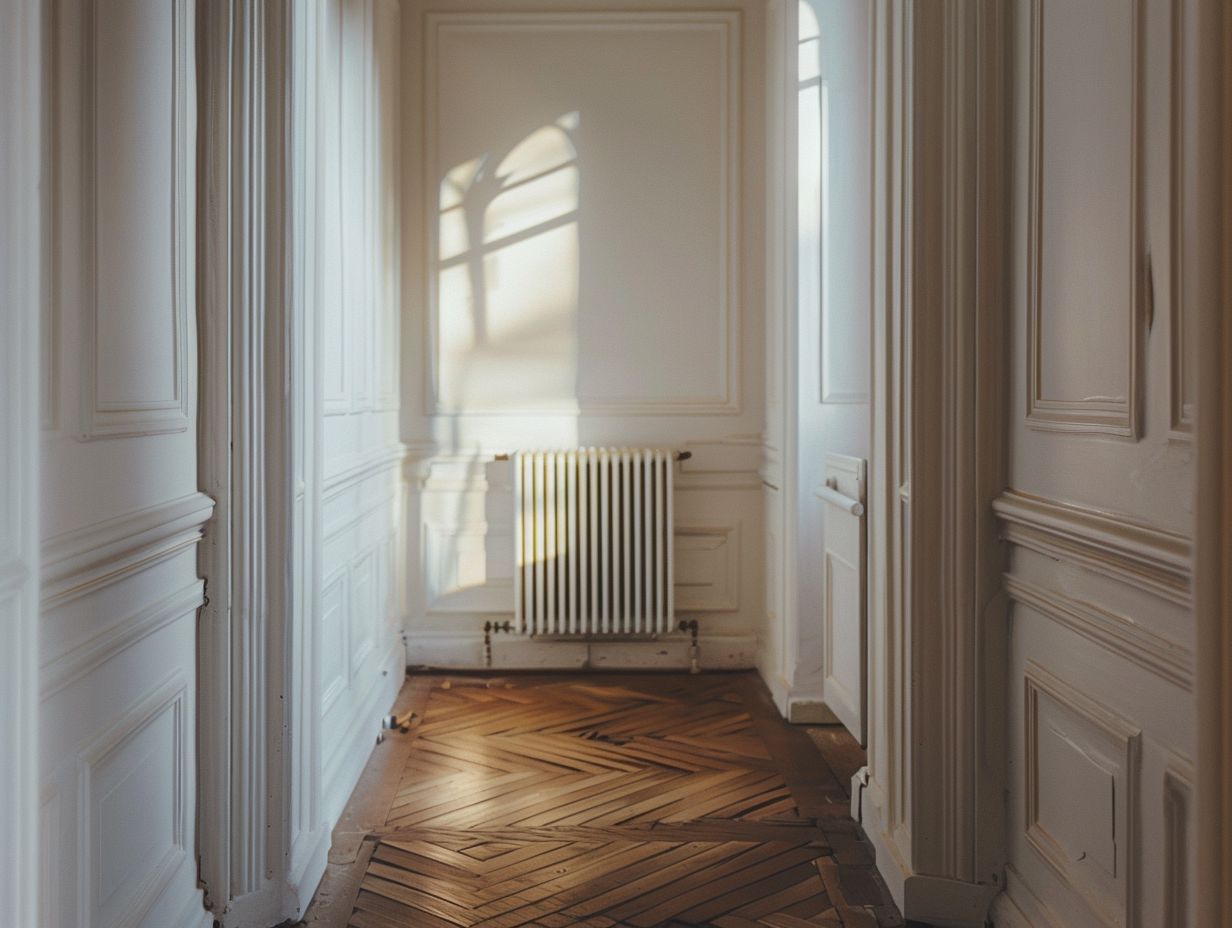
Utilising the appropriate tools and techniques for turning a radiator valve is imperative for maintaining optimal hot water flow within your heating system.
Tools such as bleed valves, water mains access points, and air valves are essential for releasing trapped air and ensuring efficient water flow. Properly connecting water joints and valves is crucial for the overall performance of your radiator system.
In terms of optimising the performance of your radiator, it is essential to have a clear understanding of how each tool and technique contributes to the system’s efficiency.
Bleed valves are crucial for releasing any trapped air pockets within the radiator, preventing blockages and ensuring smooth water flow.
Access to water mains and correct connection of water joints are necessary for maintaining a consistent supply of hot water throughout the system. Additionally, air valves play a critical role in regulating air pressure and maintaining a balanced heating environment.
By judiciously utilising these tools and techniques, you can enhance the functionality of your radiator system and improve overall energy efficiency.
Troubleshooting Common Issues
Troubleshooting common issues with radiator valves is crucial for preventing system failures and maintaining consistent heating performance.
Problems such as incorrect radiator temperature settings, inefficiencies in energy-efficient radiators, and overall system failure can have a direct impact on heating efficiency. Employing proper maintenance and troubleshooting techniques is essential for preserving system functionality.
Regularly inspecting radiator valves and pipes for leaks, air pockets, or corrosion is important to detect potential issues at an early stage. It is also vital to ensure that the valves are free from blockages or obstructions, as these can disrupt the flow of hot water and impact heating output.
Additionally, adjusting radiator valves in response to changes in room temperature can enhance energy efficiency and comfort levels in the household.
By maintaining a proactive approach to maintenance and promptly addressing any issues, homeowners can optimise the performance and longevity of their heating systems.
Valve Stuck or Difficult to Turn
Encountering a radiator valve that is stuck or difficult to turn can be a common issue during radiator installation or maintenance.
Factors such as the quality of radiators, improper temperature settings, and reduced heating output may contribute to valve problems. Addressing these issues promptly is essential for maintaining optimal heating performance.
One of the key installation challenges associated with radiator valves is ensuring they are fitted correctly, as any misalignment can lead to operational issues.
In addition, poor radiator quality can result in valves getting stuck due to build-up or corrosion. When temperature settings are not calibrated accurately, it can strain the valves and hinder their smooth functioning.
To combat these problems, homeowners can apply lubricants to sticky valves, adjusting the settings cautiously to prevent strain. Seeking professional help for intricate valve repairs or replacements can also ensure prolonged heating system efficiency.
Leaking or Dripping Valve
Dealing with a leaking or dripping radiator valve can have several negative consequences, including water wastage, reduced hot water flow, and the risk of system failures within the heating system.
It is crucial to address leaks promptly and determine the underlying cause, such as faulty radiator pipes or connections, to prevent further damage and uphold the integrity of the system.
Leaking radiator valves not only waste water but can also impede the overall efficiency of the heating system.
The constant dripping can lead to a drop in system pressure, impacting the distribution of hot water throughout the house. If left unattended, these leaks can escalate into more significant issues, potentially resulting in system malfunctions or structural damage.
Regular inspection of the radiator valves and immediate action upon detecting any signs of leakage are essential to avoid expensive repairs and ensure the optimal performance of the system.
Maintaining and Cleaning Radiator Valves
Regular maintenance and cleaning of radiator valves are crucial for ensuring optimal heating performance and efficiency within your system. Clean valves play a key role in improving heating output, ensuring consistent hot water flow, and enhancing overall system reliability.
Proper care and maintenance of radiator valves can significantly extend the lifespan of your heating system.
By consistently cleaning and maintaining your radiator valves, you can prevent the accumulation of debris or sediment that may impede the flow of hot water, thereby reducing the heating efficiency of your system.
This regular upkeep also aids in maintaining precise temperature control throughout your residence, guaranteeing a comfortable living environment.
Clean valves are essential for ensuring smooth operation of your heating system, thereby reducing the likelihood of breakdowns and the need for costly repairs.
An efficiently maintained heating system with clean radiator valves is not only more reliable but also more energy-efficient, leading to a reduction in your overall heating expenses.
Proper Maintenance for Longevity
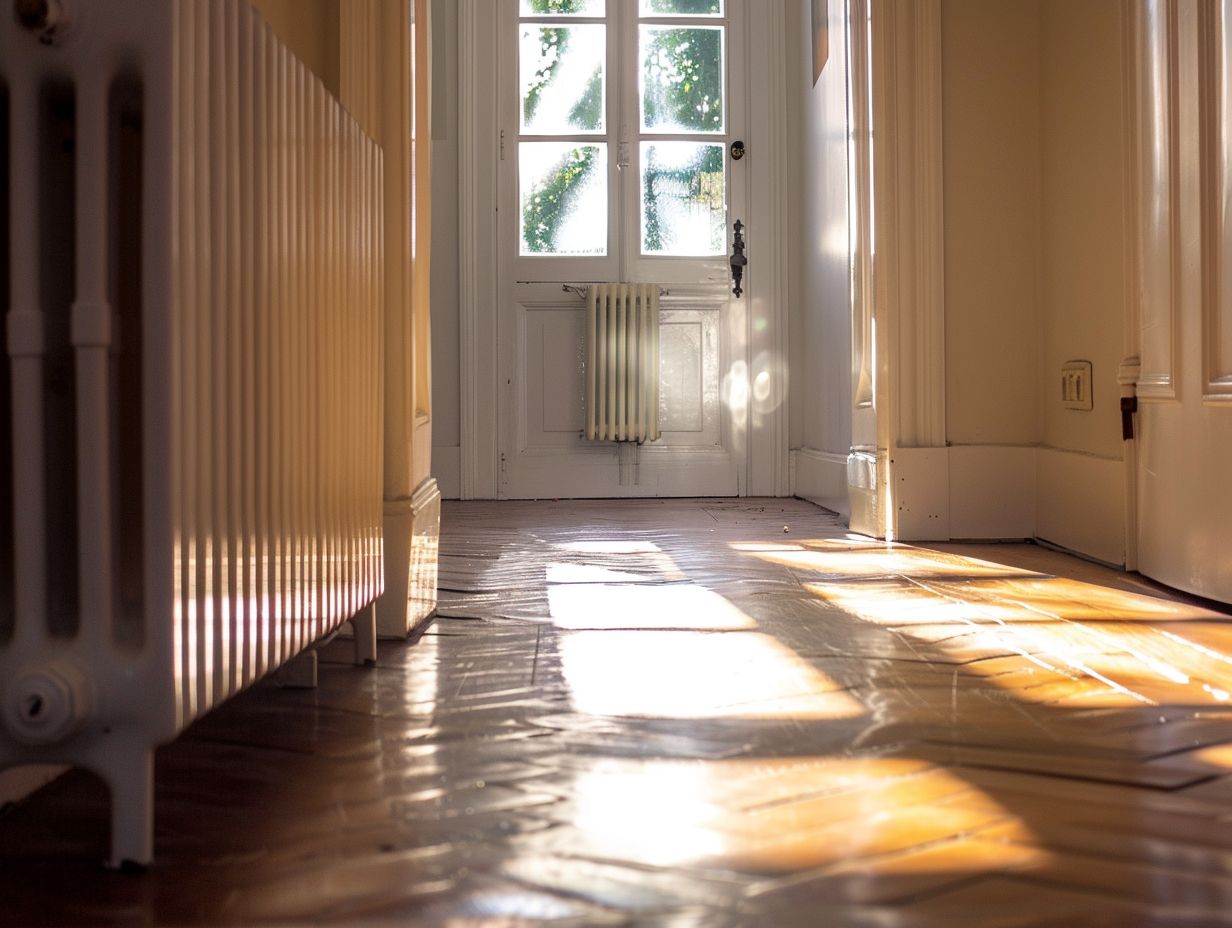
Implementing proper maintenance practices for radiator valves is crucial for ensuring the longevity and efficiency of your heating system.
Regular maintenance not only improves system efficiency and room control but also helps reduce energy consumption and lower heating bills. Prioritising maintenance is essential for homeowners looking to extend the lifespan of their heating systems.
Regularly inspecting radiator valves for leaks or blockages is key to preventing potential issues and maintaining optimal performance. It is advisable to bleed the radiators annually to release trapped air, ensuring even heat distribution.
Checking the thermostat settings and ensuring they are calibrated correctly can have a significant impact on the overall efficiency of your heating system. Homeowners should also monitor temperature settings to avoid unnecessary energy wastage and ensure comfort levels in different areas of the home.
Replacing a Radiator Valve
In situations where a radiator valve fails to control the flow of hot water effectively, it can result in uneven heating throughout the space.
Replacing a radiator valve may be necessary in cases of system failure, poor radiator performance, or the installation of higher-quality radiators. Upgrading to more efficient radiators can also necessitate the replacement of valves to ensure optimal performance.
Properly replacing a valve involves disconnecting water joints, selecting a suitable replacement, and ensuring a secure installation. When embarking on the replacement process, it is crucial to first shut off the water supply to the radiator and allow it to cool down.
Using appropriate tools, carefully disconnect the old valve from the radiator and select a new valve that matches the specifications of the existing system.
Properly sealing the joints and ensuring a tight fit will guarantee a leak-free and efficient operation. Addressing these issues promptly can prevent further damage to the heating system.
When to Consider Replacement?
Understanding when to consider replacing a radiator valve is essential for maintaining system efficiency, preventing failures, and optimising heating performance.
Signs such as persistent system issues, increased heating bills, or deteriorating radiator pipework may indicate the need for replacement. Taking prompt action can assist homeowners in avoiding costly repairs and ensuring consistent heating.
A malfunctioning radiator valve can result in uneven heating distribution, leading to some rooms being excessively warm while others remain cold. This imbalance not only impacts comfort levels but also strains the entire heating system, causing unnecessary wear and tear.
Over time, these efficiency issues can have a significant impact on energy bills as the system struggles to uphold a consistent temperature throughout the house. By proactively recognizing signs of valve deterioration, homeowners can address potential problems early and prevent major system failures.
Steps for Replacing a Valve
- When replacing a radiator valve, you must follow several crucial steps to guarantee a successful installation and optimal hot water flow in the heating system.
- These steps involve draining the system, disconnecting radiator pipework, removing the old valve, fitting the new valve, and refilling the system. Properly replacing a valve can improve system efficiency and prevent cold spots in the radiators.
- After draining the system, it is essential to ensure that all pressure is released to prevent any accidents during the replacement process. Once you disconnect the radiator pipework, carefully remove the old valve to avoid damage to the surrounding components.
- When fitting the new valve, ensure a secure connection to prevent leaks and maintain proper water flow. Refilling the system should be done slowly, allowing air to escape, and checking for any potential leaks as you complete the process.
Frequently Asked Questions
Which Way Do You Turn a Hallway Radiator Valve?
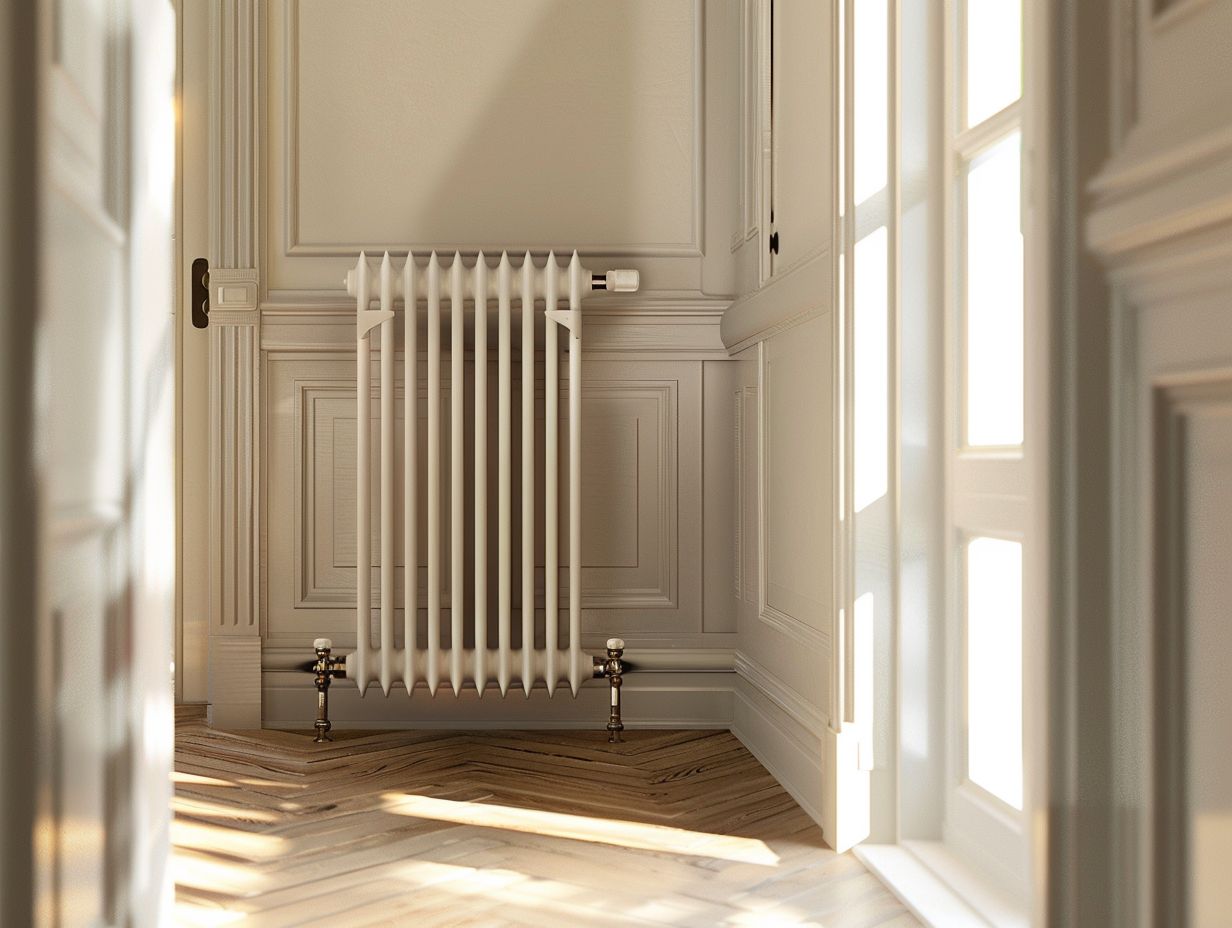
The direction in which you turn a hallway radiator valve depends on whether you want to increase or decrease the heat in your hallway.
How do I know which direction to turn the radiator valve?
To determine which way to turn the hallway radiator valve, you can check the markings on the valve. Most valves will have a + and – sign indicating which way to turn for increasing or decreasing heat.
What happens if I turn the hallway radiator valve the wrong way?
If you turn the hallway radiator valve the wrong way, you may accidentally increase or decrease the heat in your hallway. It’s always best to check the markings on the valve or consult a professional if you are unsure.
Can I adjust the heat in my hallway with the radiator valve?
Yes, you can adjust the heat in your hallway by turning the radiator valve. This is a quick and easy way to control the temperature in your hallway without having to adjust the thermostat for your entire home.
Do all hallway radiators have valves?
No, not all hallway radiators have valves. Some may have a different type of temperature control, such as a knob or lever on the radiator itself. It’s important to familiarise yourself with the type of temperature control your radiator has.
Is it safe to turn the hallway radiator valve by myself?
Yes, it is generally safe to turn the hallway radiator valve by yourself. However, if you are unsure or uncomfortable doing so, it’s always best to consult a professional to avoid any potential damage or accidents.

